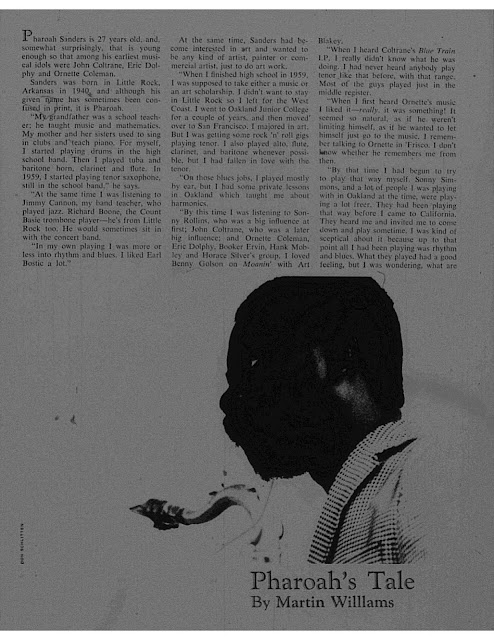Jan
Garbarek (ss/ts) Charlie Haden (b) Egberto Gismonti (g/p)
Folk
Songs (ECM) is the trio's follow-up to Magico (both recorded during
1979) and four of the six pieces feature Garbarek on soprano (albeit
of the curved variety....I'm being a little flexible with the
“Straight Horning” title today). A few years back I made an
effort to check out a fair amount of Garbarek's work, and almost
without exception I preferred his playing from the 70s. Garbarek's
distinctive tone (perhaps even unique) was the thing that struck me
when first listening to him many years ago. It's very easy to pick
and that alone is worthy enough reason to give him a listen.
Considering soprano is his second horn makes it all the more
impressive. And judging from the more recent things I have heard
(mostly via concert footage on Youtube), it's still fairly well
intact.
It's a
bold sound, resonant, full and the upper register can have a
laser-like focus at times. While revisiting Folk Songs this week I
started noticing how he uses tone to maintain energy (on both ballads
and up tempo pieces). The attack, buzz, vibrato and dynamics have an
urgency to them and gives him the freedom to use space and not
overplay while still maintaining energy and momentum. “Cego
Aderaldo” is a pretty good example or the held notes on
“Equilibrista” or the title track.
The
influence of Ornette Coleman comes through in his soprano playing but
I don't hear it as much in his tenor playing (but that could be
because my listening has focused on his soprano work). It is hinted
at in his phrasing, melodic material and certain intervals. Maybe it
is most apparent on “For Turiya” (side note: the opening of the
piano solo on this track always seems to make me think of Mike Nock).
“The Windup” from Belonging with Keith Jarrett is another example
of the Ornette influence on Garbarek too.
I like
the way the notes are almost smeared together on uptempo lines on
“Equilibrista.” At times this track brought to mind David Liebman
but I think it had to do the post-Coltrane type content of the lines
rather than the articulation/smeared phrasing (or maybe it's just
because Lieb is playing in town next weekend and he was on my mind).
Haden
plays great and there are times when I listen to this album just to
focus on his playing. As usual he makes a great study for using the
minimum to the maximum.
I'm
making an effort to keep up the weekly straight horning post. I'm yet
to decide on what soprano album will be the next to get some
attention, but stay tuned for more.




